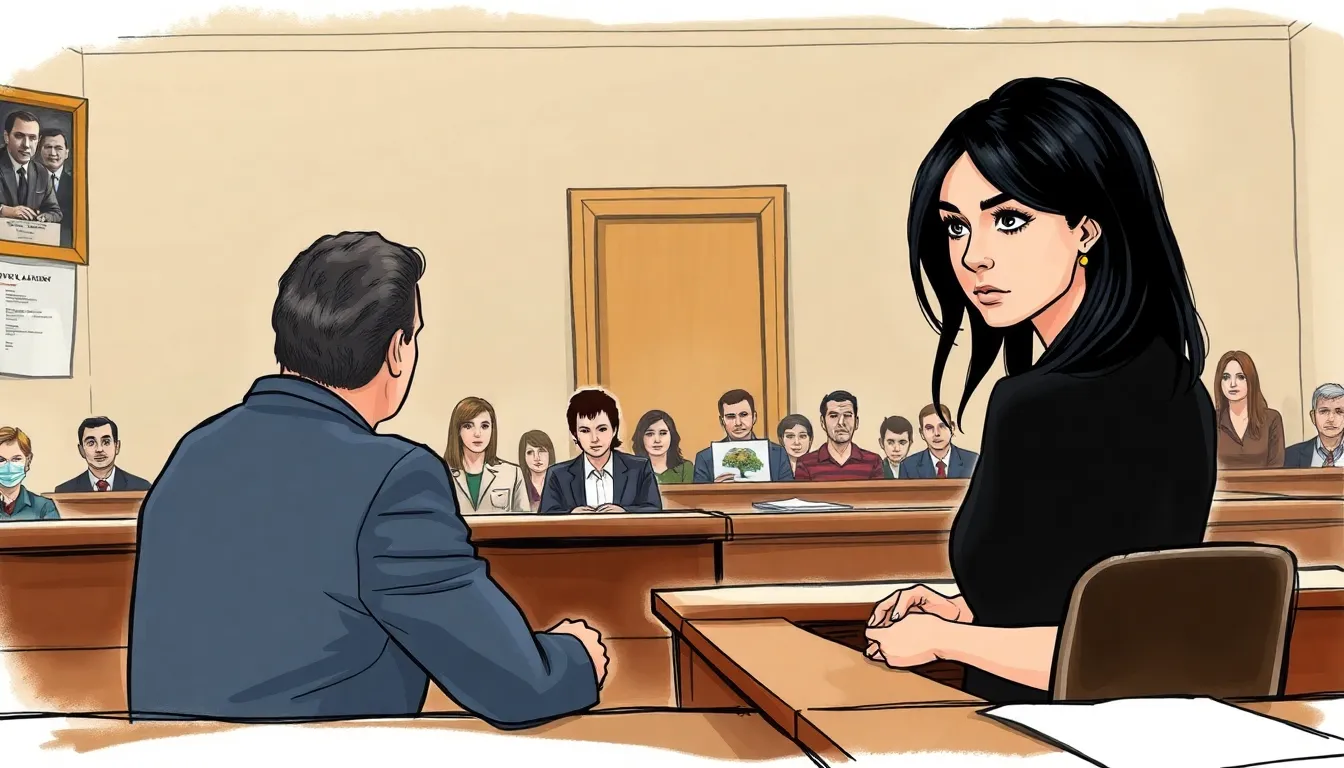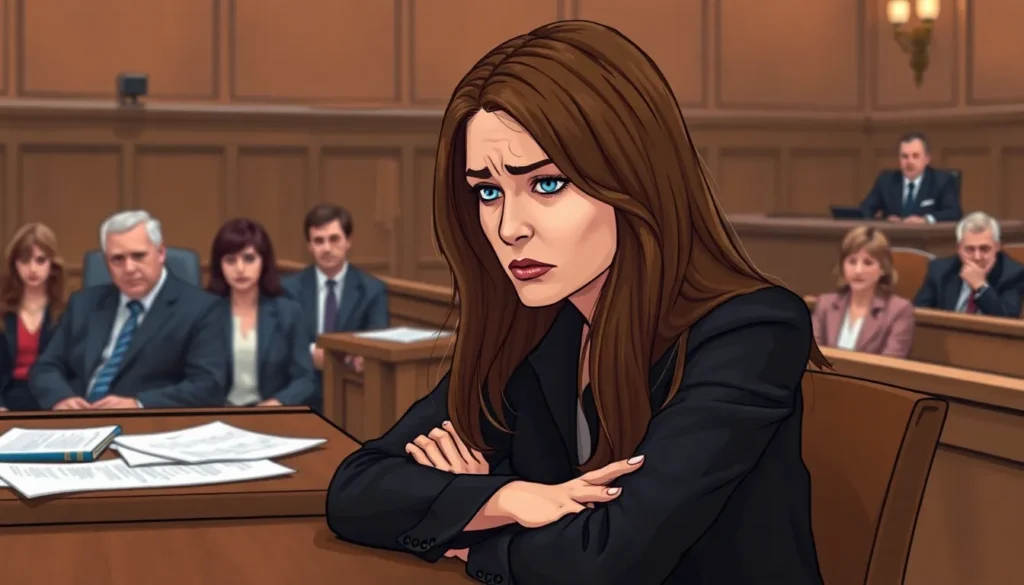In a case that captivated the nation, Casey Anthony walked away from a murder charge that left many scratching their heads. How could someone accused of such a heinous crime escape the clutches of justice? The courtroom drama unfolded like a reality show, complete with plot twists that even Hollywood couldn’t script.
Despite the overwhelming public outcry, the jury found her not guilty, sparking debates that still rage on today. Was it a failure of the prosecution or a masterclass in legal strategy? As the dust settled, the verdict revealed more than just a verdict; it exposed the complexities of the legal system and the art of reasonable doubt. Buckle up as we dive into the reasons behind this controversial decision and explore the intricacies that led to one of the most talked-about acquittals in American history.
Overview Of The Casey Anthony Case
Casey Anthony was a young mother charged with the murder of her two-year-old daughter, Caylee. The case gained national attention due to its tragic nature and the media coverage surrounding it. High-profile elements included the timeline of Caylee’s disappearance, which began in June 2008, and the subsequent investigation that revealed chaotic family dynamics.
Jurors heard evidence that included forensic analysis, witness testimonies, and Casey’s behavior after Caylee’s disappearance. The prosecution argued that Casey killed her daughter to escape parental responsibilities. Defense attorneys countered, claiming Caylee accidentally drowned in the family pool and that Casey’s lies were a result of trauma.
Key aspects of the trial involved the concept of reasonable doubt. Jurors ultimately opted for acquittal, citing insufficient evidence linking Casey to the crime. During the trial, the impact of media sensationalism became apparent, influencing public perceptions of guilt and innocence.
While the jury deliberated, tension grew both inside and outside the courtroom. Discussions about the effectiveness of legal strategies emerged, reflecting deep divides within public opinion. Many questioned whether the prosecution adequately presented their case, while others focused on the defense’s ability to create doubt.
Discussions about the case also touched on broader issues within the American legal system, including the presumption of innocence. Casey’s acquittal sparked debates about justice, parenting, and the responsibilities of the media. The courtroom drama continued to resonate long after the verdict, making it one of America’s most controversial legal cases.
Key Evidence Presented In Court

The Casey Anthony trial showcased a battle of evidence and narratives that ultimately influenced the jury’s verdict.
Prosecution’s Arguments
The prosecution focused on establishing circumstantial evidence that implicated Casey Anthony in Caylee’s death. They presented forensic testimony linking Casey’s car to the decomposition of a human body. Witnesses testified about the smell in the vehicle, suggesting a serious crime. Additionally, experts noted the presence of gas cans and duct tape, further fueling suspicions. The timeline presented indicated Casey’s inconsistent statements about her daughter’s whereabouts, painting a picture of negligence and deceit. Emotional testimonies from family and friends added weight to the prosecution’s argument, yet they struggled to produce definitive physical evidence directly connecting Casey to the crime.
Defense’s Arguments
In contrast, the defense argued that no concrete evidence existed to prove Casey caused Caylee’s death. They suggested that Caylee’s accidental drowning might have occurred, emphasizing the absence of a body, murder weapon, or eyewitnesses. Experts challenged the prosecution’s forensic findings, questioning their reliability. The defense portrayed Casey as a flawed but loving mother overwhelmed by circumstances, shifting blame toward the chaotic family dynamics instead of her actions. They insisted that the prosecution failed to establish guilt beyond a reasonable doubt, relying on speculative claims rather than factual proof.
Jury Deliberation Process
Jury deliberation played a crucial role in the outcome of the Casey Anthony trial. Jurors discussed the evidence and the arguments presented by both the prosecution and the defense. A significant aspect of these deliberations involved evaluating the standard of reasonable doubt.
Confusion regarding the prosecution’s circumstantial evidence created obstacles for the jurors. They contemplated the lack of definitive proof linking Casey directly to Caylee’s death. Emotional testimonies stirred debates among jurors, highlighting contrasting experiences presented throughout the trial. Discussions focused on how the jury perceived Casey’s character and the broader implications of the case.
In this high-profile trial, jurors faced intense media scrutiny, adding pressure to reach a verdict. Their task involved sifting through complex evidence and emotional narratives, which sometimes clouded judgment. The deliberation process, lasting about 10 hours over two days, reflected the gravity of their responsibility. According to the jury’s feedback, they grappled with uncertainties surrounding the evidence and the defense’s narrative of an accidental drowning.
Ultimately, the verdict of not guilty arose from the jurors’ inability to establish guilt beyond a reasonable doubt. They recognized the limitations of circumstantial evidence in reaching a unanimous decision. With no eyewitnesses and a lack of physical evidence, the defense’s argument resonated with jurors. The challenge of navigating such a high-stakes case cemented the deliberation process as a pivotal moment in American legal history.
The Role Of Media Coverage
Media coverage significantly influenced public perception during the Casey Anthony trial. Extensive reporting on the case created a sensation, capturing audience attention and shaping opinions. Numerous outlets provided continuous updates, often emphasizing dramatic elements over factual accuracy.
Public scrutiny rose as various media personalities discussed the trial’s intricacies. Commentators portrayed Casey in polarized lights, leading many to form preconceived notions of her guilt. Sensational headlines often highlighted the emotional aspects, drawing viewers and readers but complicating the juror’s task.
Pressure from the media intensified during jury deliberations. Jurors faced the dilemma of balancing personal feelings formed through media narratives with their duty to evaluate evidence impartially. The overwhelming attention could lead to potential biases impacting their decision-making process.
The information supplied through television and internet platforms contributed to a widespread narrative. Constant discussions around the case sparked debates about modern media’s responsibilities in high-profile trials. Investigative reporting focused on alleged family dysfunction and alleged behaviors, building a soap opera-like atmosphere around the case.
Consequently, the media’s role extended beyond reporting to shaping the trial’s public perception. The complexity of emotions and narratives led many outside the courtroom to form opinions without comprehensive knowledge of the evidence. In a climate fueled by speculations, the jurors’ challenge remained to navigate a verdict amid this media-fueled frenzy.
Public Reaction To The Verdict
Public reaction to Casey Anthony’s acquittal sparked nationwide outrage and disbelief. Many citizens struggled to comprehend a verdict that contradicted their perception of justice. Protests erupted outside the courthouse, reflecting the emotional turmoil felt by those who believed in her guilt.
Social media platforms became hotbeds for debate. Posts flooded in from both supporters and critics, illuminating the polarized opinions surrounding the case. Numerous commentators argued about the implications of the jury’s decision, raising questions about accountability in the legal system.
Many parents expressed anger, citing their concerns over the welfare of children and responsibilities of guardianship. The case turned into a flashpoint for discussions on parenting and societal norms. Numerous articles and opinion pieces aired feelings of betrayal by the justice system, asserting that Caylee’s tragic death deserved more than what the verdict suggested.
Television shows and podcasts picked up the story, keeping it in the public eye long after the trial concluded. Analysts dissected every aspect of the trial, exploring the roles of the prosecution and defense. Various news outlets reported on the sense of helplessness felt by Caylee’s supporters, questioning whether the legal process adequately served her memory.
Empirical surveys conducted after the trial revealed a majority of respondents disapproved of the not guilty verdict. Figures indicated that more than 60% felt the decision failed to deliver justice. Many adherents to the case still debate whether media coverage colored public opinion, creating biases that extended to the jury.
Response among legal experts varied significantly. Some praised the jury’s adherence to legal standards, while others criticized the effectiveness of the prosecution’s case. Interpretations of the incident reflect ongoing discussions about justice and public sentiment in high-profile cases.
The Casey Anthony case remains a striking example of the complexities within the American legal system. The jury’s not guilty verdict highlights the crucial role of reasonable doubt and the challenges faced by the prosecution in presenting concrete evidence. Despite widespread public outrage and media sensationalism, the legal standards upheld during the trial ultimately shaped the outcome.
This case not only ignited intense debates about justice and accountability but also underscored the impact of media narratives on public perception. As discussions continue about the implications of the verdict, it’s clear that the Casey Anthony trial will resonate in the collective consciousness for years to come, prompting ongoing reflection on the intersection of law, morality, and societal expectations.





